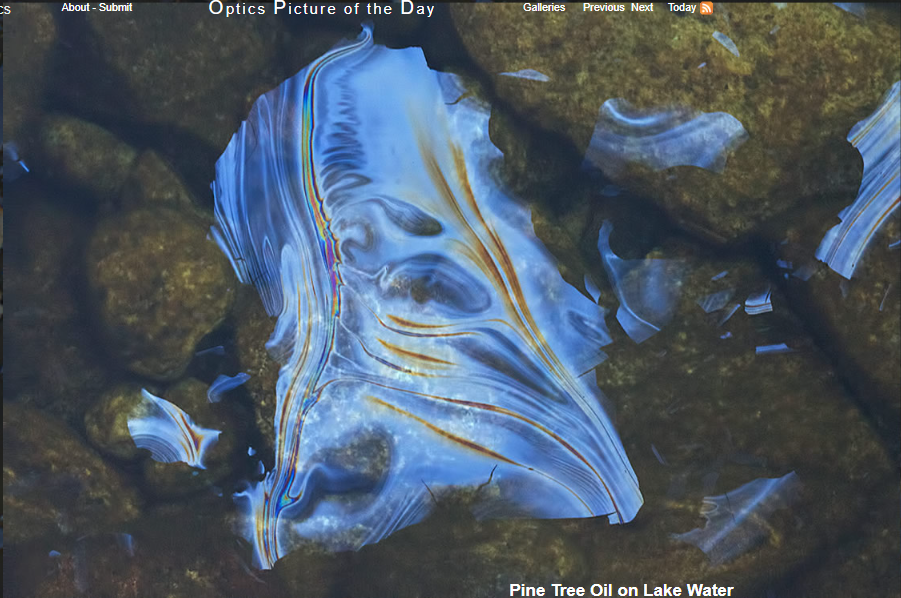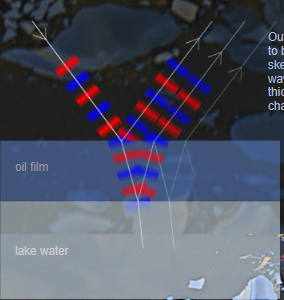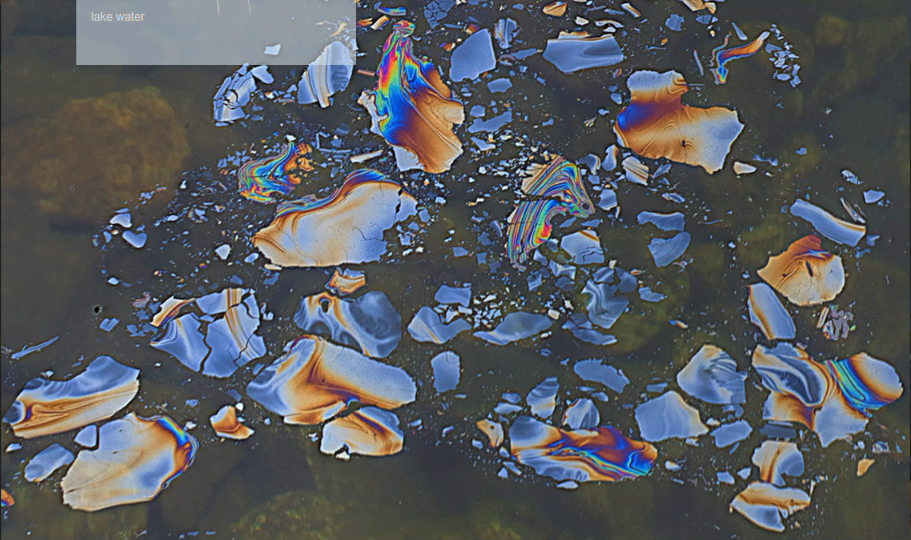Pine Tree Oil Interference Colours - OPOD
Pine Tree Oil Interference Colours - OPOD: Unveiling the Enchanting Play of Light
Welcome to a captivating exploration of the mesmerizing phenomenon known as Pine Tree Oil Interference Colours. In this article, we will delve deeper into the intricacies of this optical spectacle and unravel the science behind its enchanting beauty.
Picture this: a serene lake adorned with majestic pine trees. As the branches sway gently in the breeze, droplets of pine tree oil descend upon the tranquil water's surface, creating delicate, fragmented films. It is within these films that the magic of interference colours unfolds, offering a visual feast for the senses.
When light encounters these thin films of pine tree oil, it undergoes a remarkable transformation. The light waves reflect from both the top and bottom surfaces of the oil film, merging to form a breathtaking array of colours. The specific colour observed depends on the extent to which the two reflected waves of that particular wavelength align in phase. The phase alignment is influenced by factors such as film thickness, colour, and viewing angle.
The most vibrant and striking interference colours emerge from thin films, typically just a few wavelengths thick. In these delicate layers, the path length difference between the two waves changes gradually with varying angles, giving rise to a captivating display of hues. However, as the film thickness increases, the path length difference alters more rapidly with angle, causing the colours to appear washed out and less pronounced.
The interplay of wavelength, angle, and film thickness adds an element of intrigue to these interference colours. A slight alteration in any of these variables can dramatically transform the appearance of the colours observed. Imagine a symphony of hues dancing before your eyes, each note changing as you adjust the wavelength, angle, or thickness of the film.
To truly grasp the captivating nature of pine tree oil interference colours, it is best experienced visually. The accompanying images, captured by the talented photographer John Stetson, provide a glimpse into the ethereal beauty of this phenomenon. They showcase the delicate balance of light and oil, resulting in a kaleidoscope of colours that seems almost otherworldly.
In conclusion, pine tree oil interference colours are a testament to the captivating interplay between light and matter. Through the delicate films of oil on the surface of a tranquil lake, we are treated to a visual symphony of hues. The vibrancy and intensity of these colours are influenced by factors such as film thickness, viewing angle, and the wavelength of light. So, the next time you find yourself near a picturesque lake adorned with pine trees, take a moment to appreciate the enchanting spectacle of pine tree oil interference colours.

Pine Tree Oil on Lake Water
John Stetson captured the scene. Overhanging pine trees have dropped their oil onto the lake producing thin fragmented films.
interference colours.
Light reflects from both the top and bottom of the oil film. The two reflected waves combine and the appearance of a colour depends on the extent to which the two waves of that wavelength are in phase. The phase, determined by the two waves' path length difference alters with film thickness, colour and viewing angle.
The brightest interference colours are from thin films, ones a few wavelengths thick. In thicker films the path length difference changes rapidly with angle and the colours get washed out.
Image ©John Stetson, shown with permission

Outgoing waves happen to be in phase in this sketch. Alter the wavelength, angle or film thickness and this changes.

Note: this article has been automatically converted from the old site and may not appear as intended. You can find the original article here.
Reference Atmospheric Optics
If you use any of the definitions, information, or data presented on Atmospheric Optics, please copy the link or reference below to properly credit us as the reference source. Thank you!
-
<a href="https://atoptics.co.uk/blog/pine-tree-oil-interference-colours-opod/">Pine Tree Oil Interference Colours - OPOD</a>
-
"Pine Tree Oil Interference Colours - OPOD". Atmospheric Optics. Accessed on November 26, 2024. https://atoptics.co.uk/blog/pine-tree-oil-interference-colours-opod/.
-
"Pine Tree Oil Interference Colours - OPOD". Atmospheric Optics, https://atoptics.co.uk/blog/pine-tree-oil-interference-colours-opod/. Accessed 26 November, 2024
-
Pine Tree Oil Interference Colours - OPOD. Atmospheric Optics. Retrieved from https://atoptics.co.uk/blog/pine-tree-oil-interference-colours-opod/.